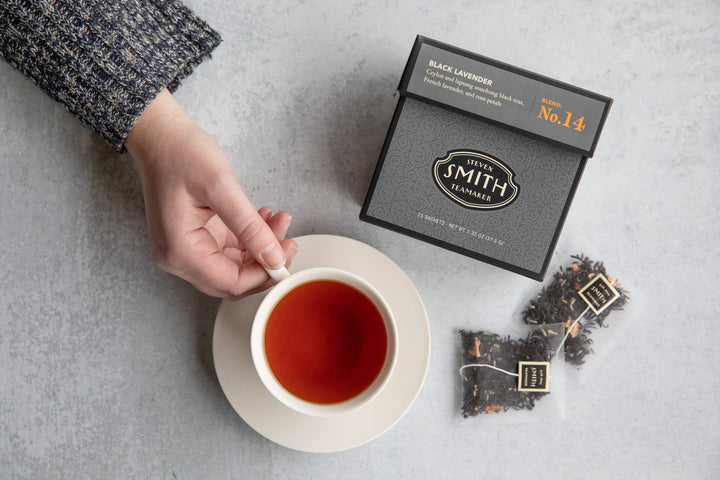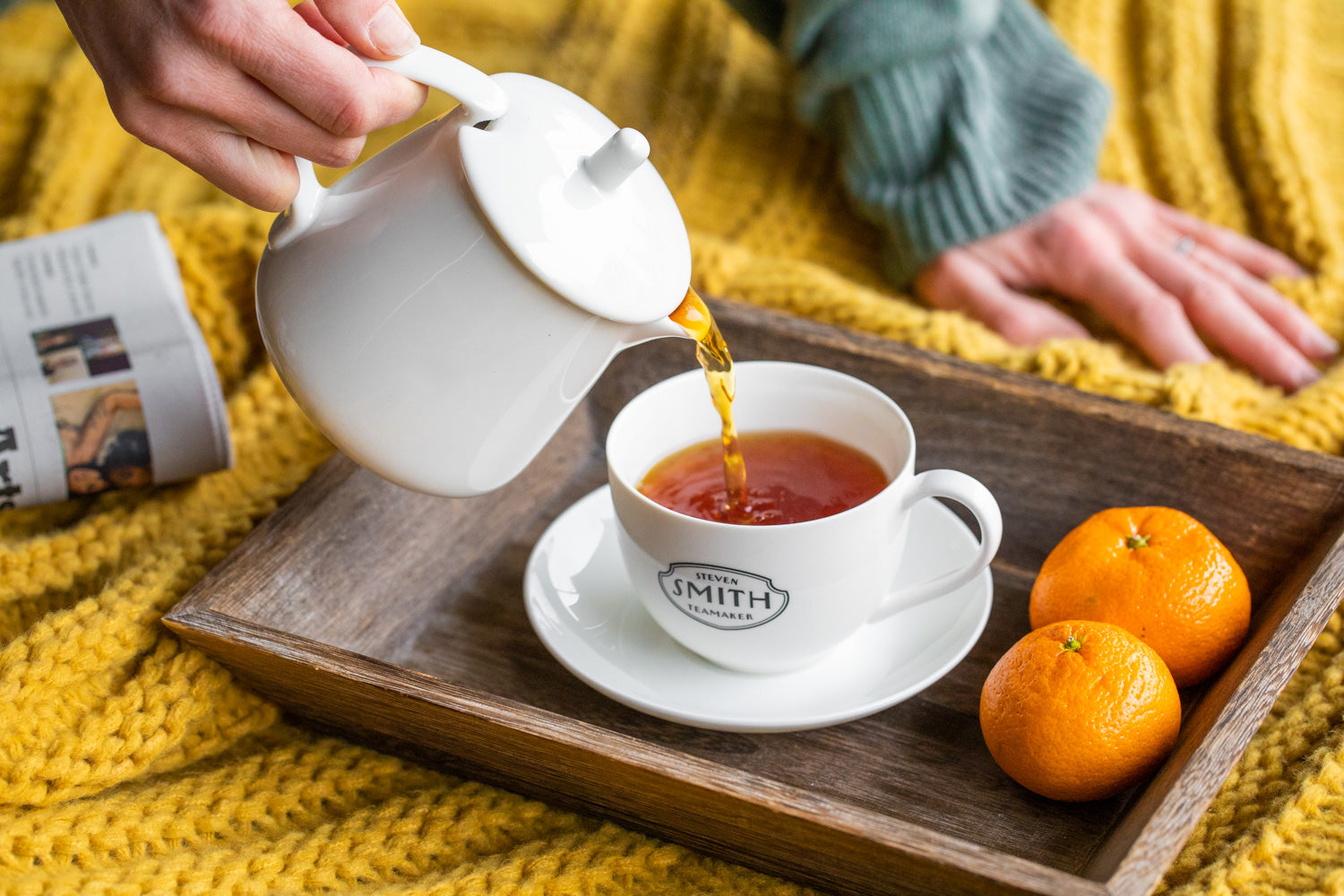Below are our step-by-step instructions on how to brew black tea so that you can enjoy a fresh cup just as any Smith Teamaker would. Once you finish, you can browse our black tea selection to find the blend or varietal that will fill your next cup.


Loose Leaf and Full Leaf Sachets
We have formulated each of our blends to ensure that anyone can enjoy the same experience by drinking our teas in a loose form or in sachets. To do this, we create our sachets with full leaf tea. Preserving the full leaves, as they are, allows the tea to stay brighter, livelier and cleaner on the palate, with more dimension than finer leaves. Because we would like you to enjoy tea in any form that is convenient for you, we have included instructions for brewing both loose leaf tea and tea sachets.
Brewing Black Tea Sachets
- For best flavor, bring spring or freshly drawn filtered water to a boil (212℉)
- Preheat your cup with boiling water, then discard the water.
- Place the sachet in your chosen vessel, whether it is a teapot or teacup. Pour about 8-10 ounces of hot water over the sachet.
- Allow the tea to steep for 5 minutes.
- After 5 minutes, remove the sachet and enjoy.
Brewing Loose Leaf Black Tea
- For best flavor, bring spring or freshly drawn filtered water to a boil (212℉).
- Preheat your vessels with boiling water, then discard the water. You can do this by pouring water into a teapot, and then pouring water from the teapot into your cups.
- Measure your tea leaves. We recommend using 1 teaspoon of loose leaf tea for every 8-10 ounces of water.
- Place your leaves in the teapot and pour 8-10 ounces of water directly over the leaves.
- Allow the leaves to steep for 5 minutes.
- After 5 minutes, place a basket strainer over your cup and pour the tea so that any leaves will be caught by the strainer.
- Serve the contents of the teapot and enjoy. Note: do not allow the tea leaves in your teapot to continue to steep.*
*Note
If you do not intend to drink all of your brewed tea right away, and instead want to sip and enjoy a leisurely pot, you will want to use a strainer inside of your teapot rather than strain the leaves while you are pouring. That way, the leaves will not be left in the pot to continue steeping. Simply find a strainer that can rest inside of your teapot likethis one, steep the leaves inside the strainer, then remove the strainer after 5 minutes.
Notes on Water Temperature
Black teas are often brewed to bring out an assertive, robust and flavorful experience. Whereas we recommend slightly lower temperatures for green and oolong teas, black teas are recommended to be brewed just off the boil so that the hot water will ensure a deep extraction and complete steeping to produce those flavors. Similarly, we recommend using a porcelain or ceramic teapot to retain the temperature of the water, while glass teapots are recommended for lower temperature waters to steep green and oolong teas. Retaining the temperature is also the impetus for preheating your vessels.
Personalizing your Flavor
As mentioned, it can be easy to customize the flavor of tea. If you want to give your black tea a stronger flavor, brew more tea leaves so that there is a larger ratio of leaves to water. We do not recommend steeping for more than five minutes, but as a general rule of thumb, the longer that you steep your tea, the more caffeinated it will become. If you prefer to bring out more astringency, as is a notable characteristic of breakfast teas, find a tea with that specific flavor profile, like British Brunch.
As our founder Steve used to say, we create “agitation not required” sachets, meaning that you simply need to steep the sachet as is without moving it around in the water to release the flavor. If you would like a deeper flavor, move the bag back and forth while removing it from your cup to produce a stronger extraction. This is simply based on personal preference. We do recommend that you avoid squeezing the sachet while removing it, as it will release bitter elements you may not want.
Adding Milk to Black Tea
Darker, fuller bodied black teas such as Assam, Keemun, Lord Bergamot, Masala Chai and Ceylon (many of which form the blend for our English breakfast tea, British Brunch), pair well with milk and sugar, for anyone looking to explore that experience. Adding milk and a bit of sugar can be customary in the United Kingdom, particularly with astringent breakfast teas.
When tasting a tea for the first time, we suggest initially experiencing the tea on its own merits, as nature made it. Then you can begin experimenting with and comparing flavors as you add ingredients like milk and sugar. Ultimately, though, we think you should drink what tastes best to you, and let your senses be your guide. If something tastes good, go for it.
